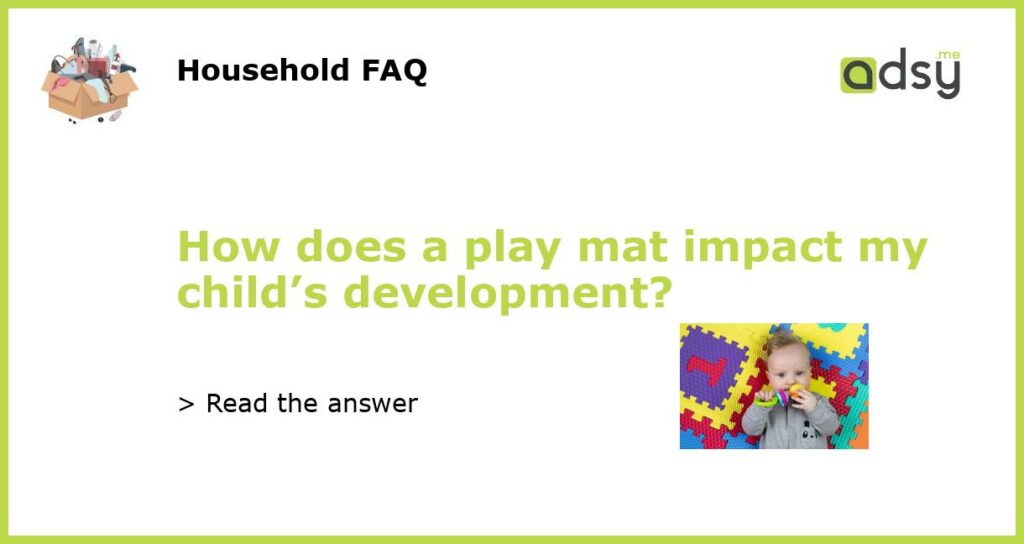As parents, we are constantly looking for ways to help our children develop and grow. One tool that has become increasingly popular in recent years is the play mat. Play mats come in a variety of shapes, sizes, and designs and have been marketed as a way to improve a child’s cognitive, motor, and sensory development. In this article, we will explore how a play mat can impact your child’s development and whether or not it is worth the investment.
Improving Cognitive Development
Play mats can have a positive impact on a child’s cognitive development. With features like bright colors, shapes, and patterns, they can help a child with visual stimulation and pattern recognition. They can also encourage exploration and experimentation, as children are able to manipulate various toys and objects on the mat. This exploration can aid in the development of problem-solving skills and can strengthen a child’s memory and attention span.
Enhancing Motor Skills
Play mats can also help with a child’s motor development. As babies begin to roll, crawl, and eventually walk, the play mat can provide a safe and comfortable environment for these movements to take place. Many play mats have additional features like dangling toys or toys that make noise when touched, which can encourage a child to reach, grasp, and interact with their environment. These interactions can strengthen a child’s fine and gross motor skills and can aid in their overall physical development.
Aiding in Sensory Development
Another benefit of play mats is their ability to aid in a child’s sensory development. Many play mats feature different textures and materials which can appeal to a baby’s sense of touch. This can help build neural connections in the brain and can aid in the development of sensory processing skills. Additionally, play mats can help with a child’s auditory development through the use of toys that make noise or music that is implemented in the mat itself.
Is it Worth the Investment?
While play mats can be a useful tool in aiding in a child’s development, they are not absolutely necessary. A baby can still develop and grow without the use of a play mat. However, if you have the means to invest in a play mat, it can be a valuable addition to your child’s play space. When choosing a play mat, look for features that encourage exploration, manipulation, and sensory experiences. And remember, the most important way to help your child develop is through regular face-to-face interactions, where you can model and support their growth and development.






